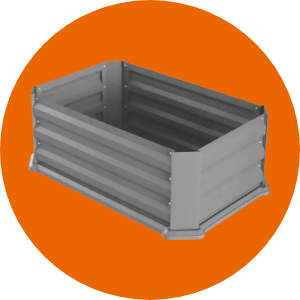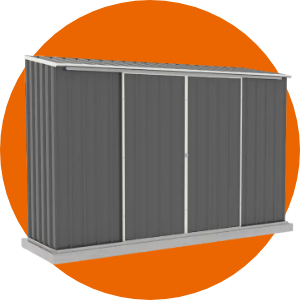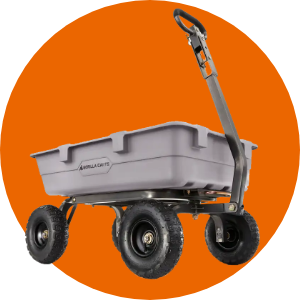- 6 October 2020
Build your own dog kennel
BIG OR SMALL, A HOME FOR MAN’S BEST FRIEND.
This attractive, functional design can be easily adapted to accommodate all creatures - both great and small! You can easily build this kennel with it’s unique hinged roof style.
The kennel is made using structural grade plywood. Plywood is strong, relatively light weight and durable, retains it’s original shape in all climates and is quite suitable for outdoors, provided it is well coated with good quality paint or stain to suit the surrounding environment.
Materials Required
Structural grade plywood,
12mm thick 2400 x 1200mm - 1 sheet
sawn treated pine
1 @ 2.7m, 100 x 50mm for floor frame
1 @ 0.6m, 50 x 50mm for roof cleat
bullet head galvanised nails for floor frame assembly
100mm x 4.5mm
bullet head galvanised nails for plywood walls assembly
40mm x 2.0mm
OR
use countersunk zinc plated screws for plywood
40mm x 6g
construction grade adhesive
- 1 cartridge
silicone sealant
- 1 cartridge
galvanised hinges
2 x 50mm
galvanised cup head bolts and nuts
20mm x 6mm
galvanised hasp and staple and 20mm x 6mm galvanised cup head bolts and nuts
OPTIONAL
corrugated Colourbond roofing and 12mm galvanised clouts
foil insulation for underside of roof
Remember, always check measurements TWICE, before cutting ONCE.
Planning the kennel size
The kennel should be just big enough for the dog to stand up and spin around in, before settling down for a well-deserved nap. So here’s a rough guide:
- small size for toy breed and most small terriers
- medium size for hounds, Labradors, Irish Setters, Corgis, Cocker Spaniels, German Shepherds, Boxers etc.
- large size for Afghans, Old English Sheepdogs, Great Danes etc. and also for small dogs sharing.
Refer to the table below for material sizes after determining the size of the kennel you should build for your dog.
TABLE 1. OVERALL DIMENSIONS IN MM
| Size | Length | Width | Wall Height | Peak Height | Total Height |
|---|---|---|---|---|---|
| Small | 600 | 480 | 440 | 240 | 680 |
| Medium | 1000 | 800 | 680 | 400 | 1080 |
| Large | 1500 | 1200 | 1080 | 600 | 1680 |
TABLE 2. DOOR OPENING DIMENSIONS
| Size | Height | Width |
|---|---|---|
| Small | 340 | 180 |
| Medium | 580 | 310 |
| Large | 980 | 400 |
STEP 1
Build the floor frame
To keep the kennel (and your dog) high and dry inside, the floor should be at least 100mm off the ground to allow air circulation. So start building the sub-floor frame first using the 100 x 50mm
treated pine - it’s a must because it’s virtually rot proof and termite proof.
These sizes are for the small size kennel.
Cut the 100 x 50mm treated pine for the floor frame as follows:
- 2 pieces 575mm long sides
- 3 piece 375mm long ends and centre
- 2 pieces 215mm long short cross pieces
For the larger kennels, follow the dimensions shown on Tables 1 & 2 and work out each piece size in the same way as the small example shown above.
First, square one end of the timber using a carpenter’s square and mark a pencil line across all 4 sides of the timber, then cut neatly with a hand or power saw. Now, using the dimensions in Table 1, again using the square and pencil, measure and cut each piece to length making sure that all end saw cuts are square to ensure strong joins. Next, lay the pieces to form the frame perimeter on a firm, flat surface, butt join each corner with 2/100mm x 4.5mm galvanised bullet head nails, driving them on a slight angle towards each other for greater strength.


Now, measure and cut the centre frame crosspieces and nail in place (Diagram 1). Then drill several 12mm dia. holes about 150mm apart through the frame members approx. 70mm down from the top of the frame to provide cross ventilation and help keep the ground under the kennel dry.
Lastly, measure and cut a piece of the 12mm plywood and fix it to the sub-floor frame using a continuous bead of the construction adhesive along the top of each frame piece and galvanised nails along all sides and crosspieces.
STEP 2
Cut the walls & roof sections
As a guide to cutting the walls and roof pieces from the sheet of 2400 x 1200 x 12mm plywood, here is a sample cutting list for the small size kennel :
Sides: 576 x 440mm - 2 off
Ends: 480 x 440mm - 2 off
Roof: 775 x 400mm - 1 off, 775 x 412mm - 1 off
Gables: 480 x 240mm - 2 off
Floor: 575 x 480mm - 1 off
Mark out as shown on the sheet diagram to eliminate any mistakes and wasted timber (Diagram 2).


Diagram 2 - Plywood sheet cutting pattern for small kennel
STEP 3
Making the door
Cut the door opening out of the front wall piece before it’s fixed to the floor. You will see that the front and rear wall pieces have been cut 24mm wider than the floor width – this allows 12mm (the plywood thickness) on each side for the side walls to be butt joined inside the end wall pieces. You will have already cut the wall sizes to suit the kennel size you have decided to build (refer to Tables 1 & 2).
Now, take one end wall piece and measure 50mm from the top and bottom and mark a pencil line right across. Then measure in from each side as shown to give the desired door opening, as in Table 2 and pencil in the rounded top (use a paint can, jam tin or similar round object to give the curved shape you want).
Now, using a jigsaw, cut out the door opening by first drilling an 8mm hole in one corner, then starting at the hole, cut around the straight sides and curved top (Diagram 3).


STEP 4
Assembling the sides
Start with the front (door opening) wall, and using construction adhesive, and 40 x 2.0mm
galvanised nails or 40 x 6g plated screws, fix it to the sub-floor frame. Nails or screws should be placed every 200mm apart. Fix walls down about 30mm from the top of the sub-floor frame (measure & pencil mark a line all around the frame at 30mm to ensure that all the wall pieces line up at the same level). Now fix the rear wall in the same way, allowing the 12mm overhang each side to take the side walls.
The two side walls are now fixed in place. Using construction adhesive on the vertical butt joins, glue and screw them to the frame as before and finish off by nailing the end walls to the side walls at the joins.
STEP 5
Assembling the roof
To allow for easy cleaning and airing of dog smells, the roof has been designed to open at the rear. The roof corners have also been rounded to reduce the chance of injury.
The roof’s pitch is formed by the 45 (degree) triangular gable ends front and rear. These are made by measuring the width from the outside of the side walls across the top of the front and rear walls.
Then, allowing for the peak height shown in Table 1, cut 2 pieces of plywood to size. From the outside, tack the triangular gable ends temporarily in position with a small piece of scrap timber, resting on top of the front and rear walls.
Now the roof panels should be assembled from the sections you have already cut. Panel A should have been cut 12mm wider than Panel B to allow for the thickness of the plywood when the two pieces are butt joined at the peak of the triangular gable ends, cleat to cut 576mm (Diagram 4).
Assemble the roof by placing the cleat on the inside of Panel B to line up with the apex of the gable ends, ensuring that there is a 50mm overhang at the side and one end (back), and 125mm at the other end (front). It would be best to mark the position on the overhangs on the underside of the panel first.


Next, apply adhesive to the edges of the gable ends that contact the roof panel and tack into position with small nails – don’t drive nails all the way in as you will need to remove them once screws are placed securely. Panel A is then positioned to overlap Panel B at the apex (Diagram 4) and fixed in the same way. When both panels are fully screwed in place, apply a bead of silicone to the inside of the roof ridge joint to provide an effective seal. Now, as shown in Diagram 5, attach the two hinges to the rear wall and gable end, and the roof lock to the front wall and gable end with the 20mm x 6mm cup head bolts and nuts. Then remove the small pieces of scrap timber used to temporarily hold the walls and gable ends in place and raise the roof on the hinges. Again use the silicone to seal all the other inside joins in the roof and walls to keep the weather out.


STEP 6
Finishing the kennel
To ensure a long life for your new kennel, the plywood must be finished with an exterior gloss or semi-gloss paint to protect it – a light colour will help keep the inside temperature down for the dog.
Make sure that the edges of the plywood receive plenty of paint to seal the cut ends. It is best not to paint the inside of the kennel but do paint the underside of the floor and frame section, as it will help prevent dampness from seeping into the kennel. It’s also a good idea to allow several days for the paint to fully dry and the paint smell to evaporate before introducing your dog to its new abode.
You may also choose to add a bit of style to the kennel by covering the roof with some Colourbond corrugated steel sheet – cut to size and fix to the plywood with construction adhesive and 12mm galvanised clout or self-tapping screws. Adding some insulation to the inside of the roof will reduce the noise of heavy rain and hail. Don’t forget to fix a length of steel capping to the Colourbond sheeting at the ridge line.

























